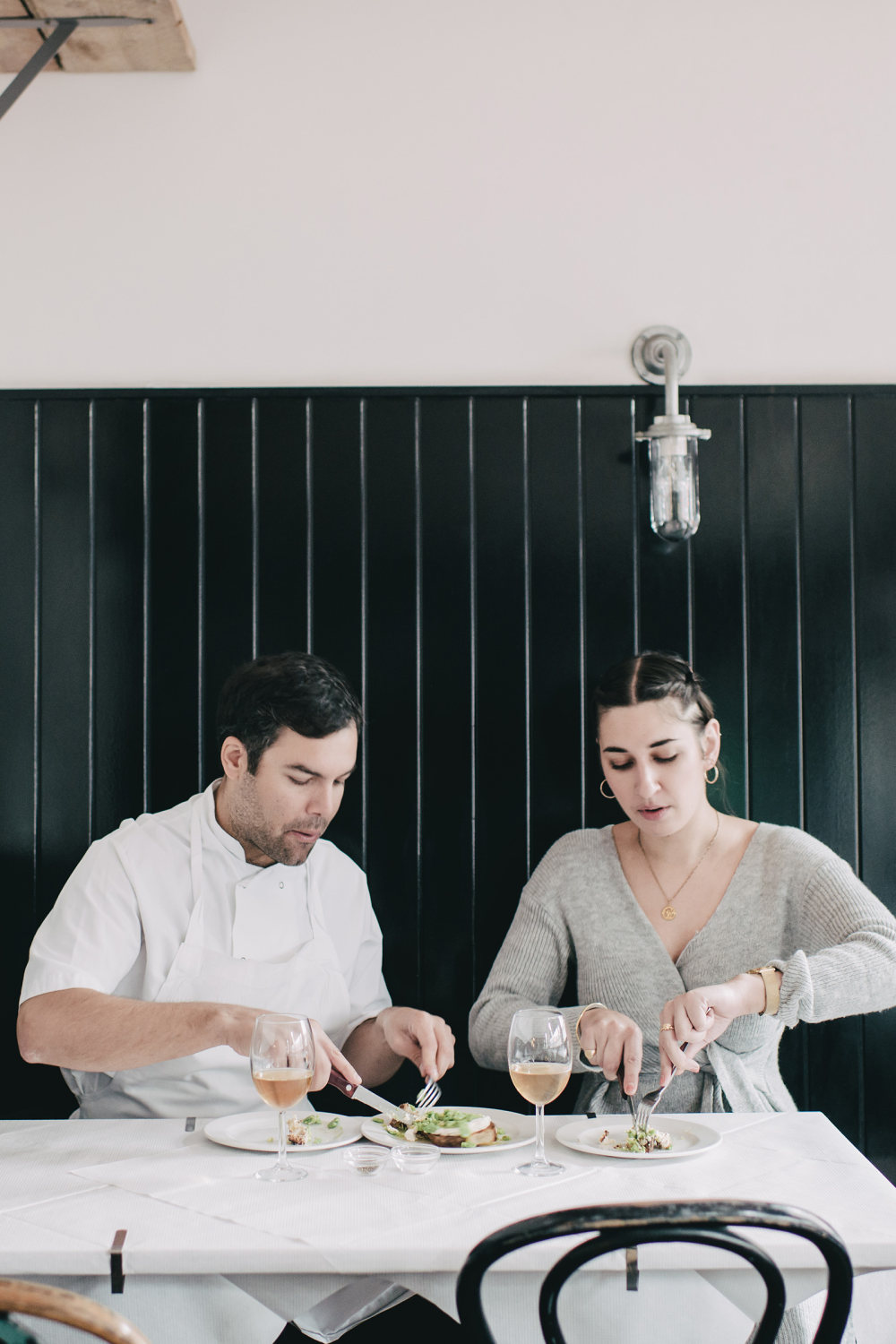

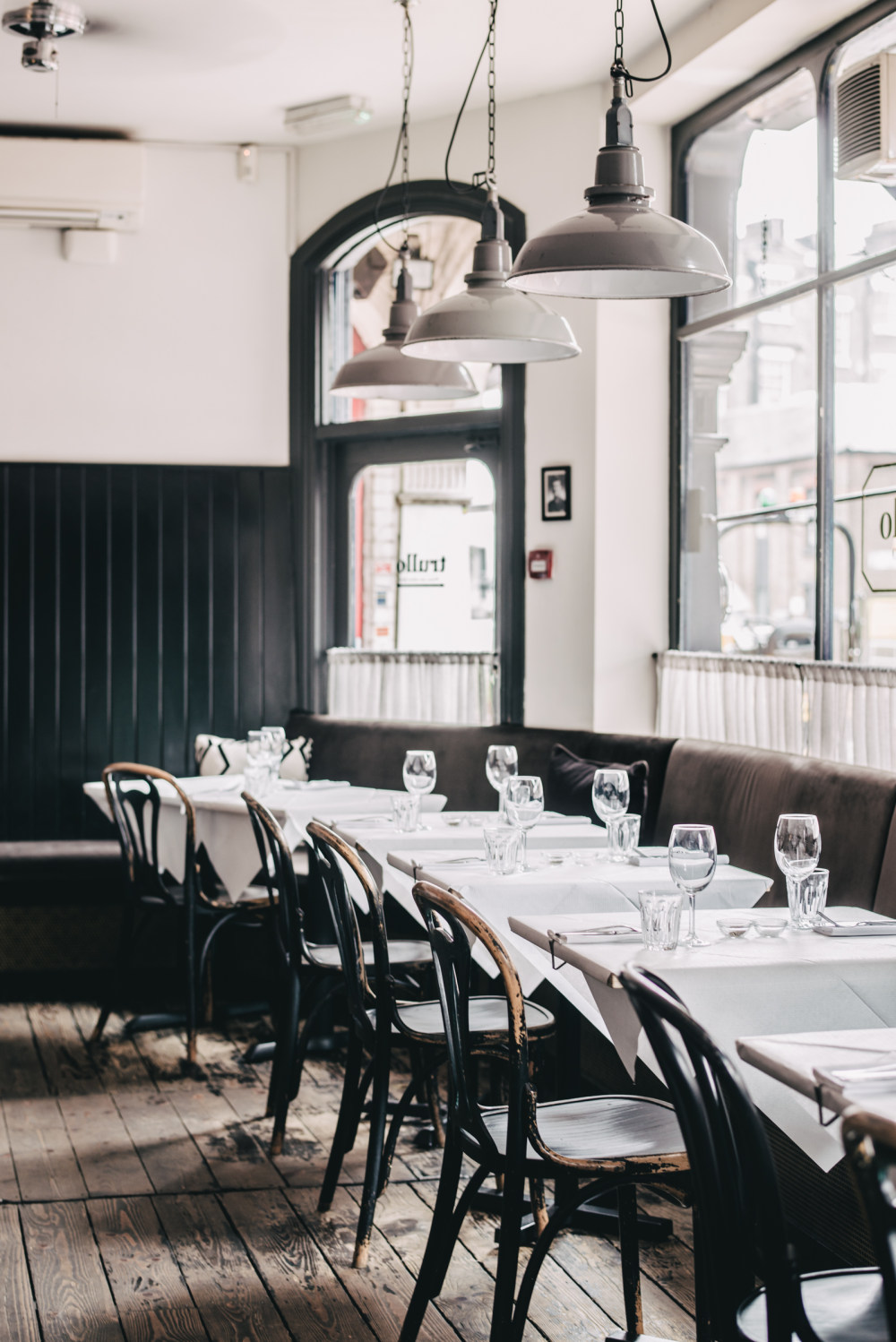


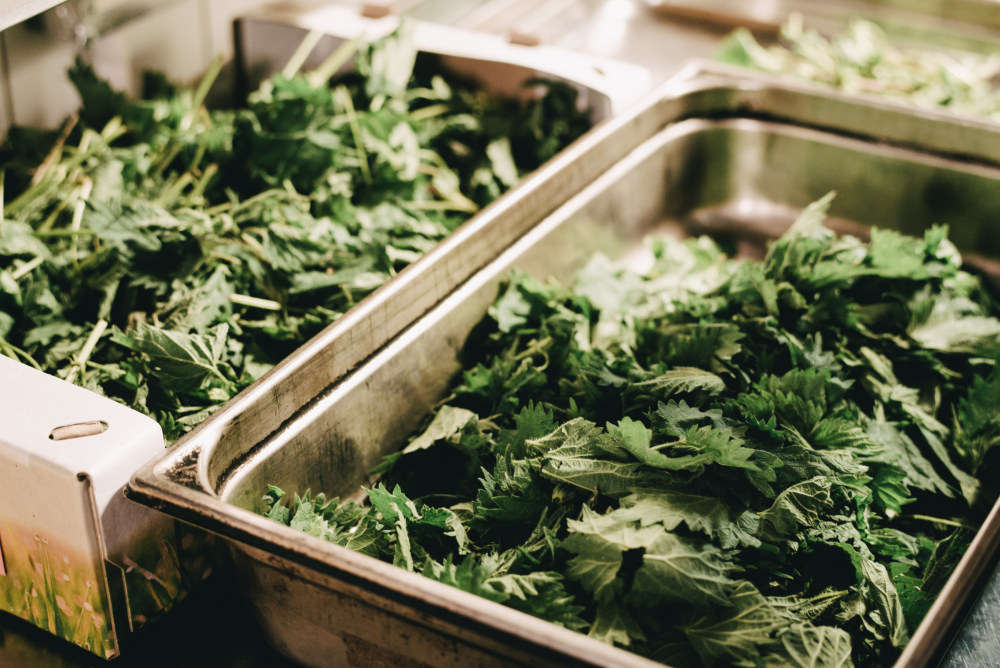
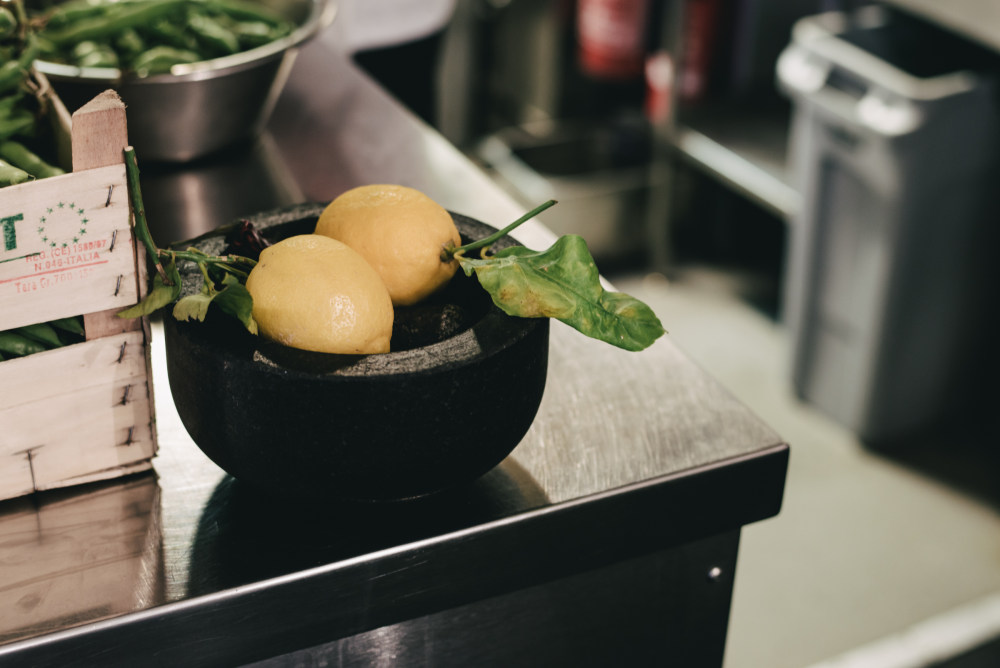
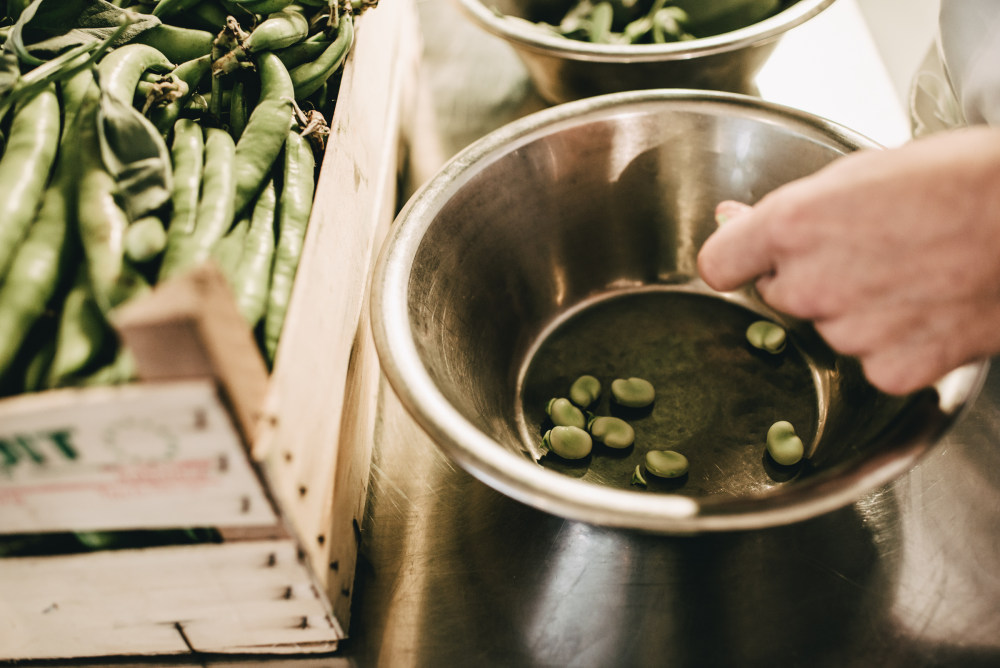
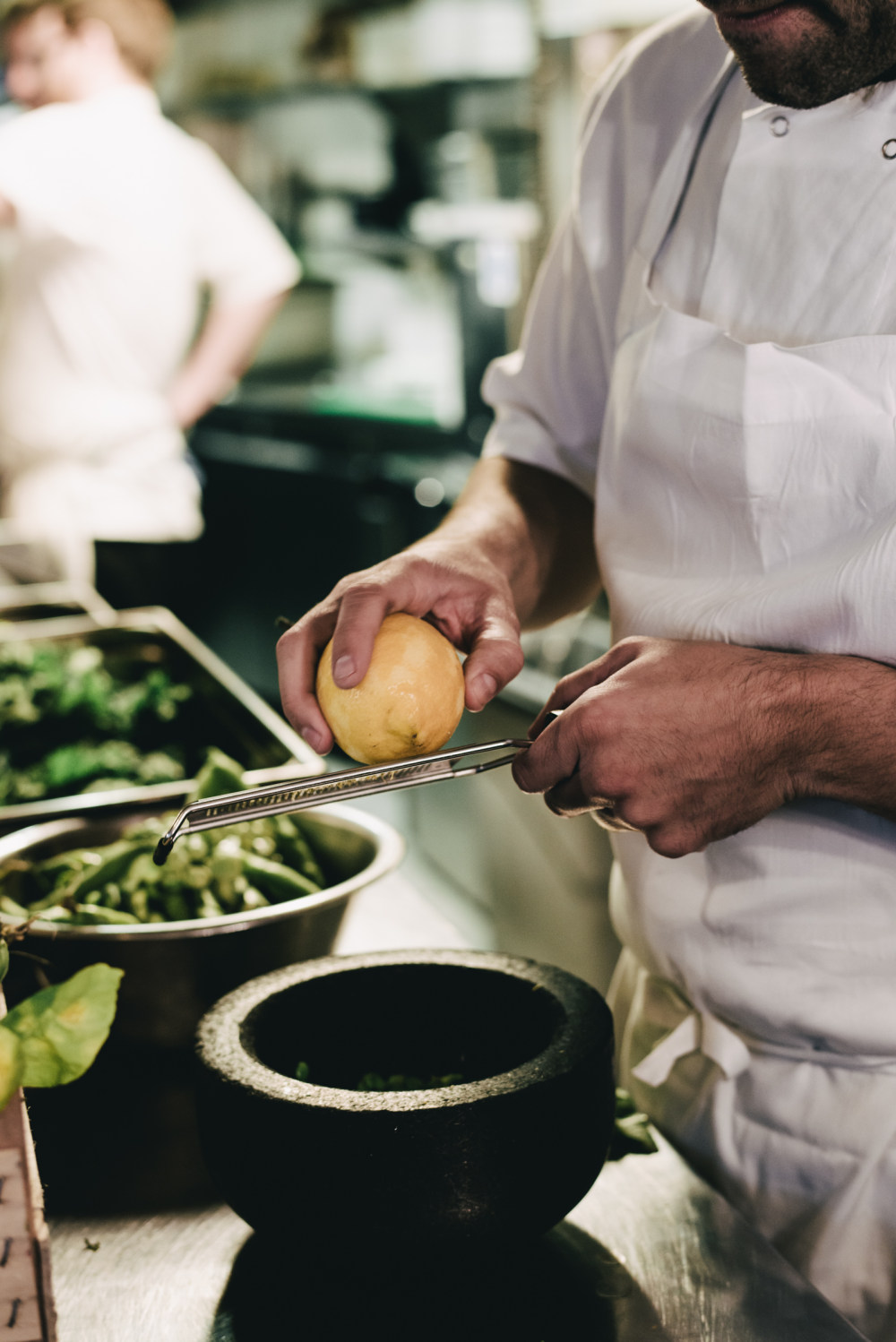
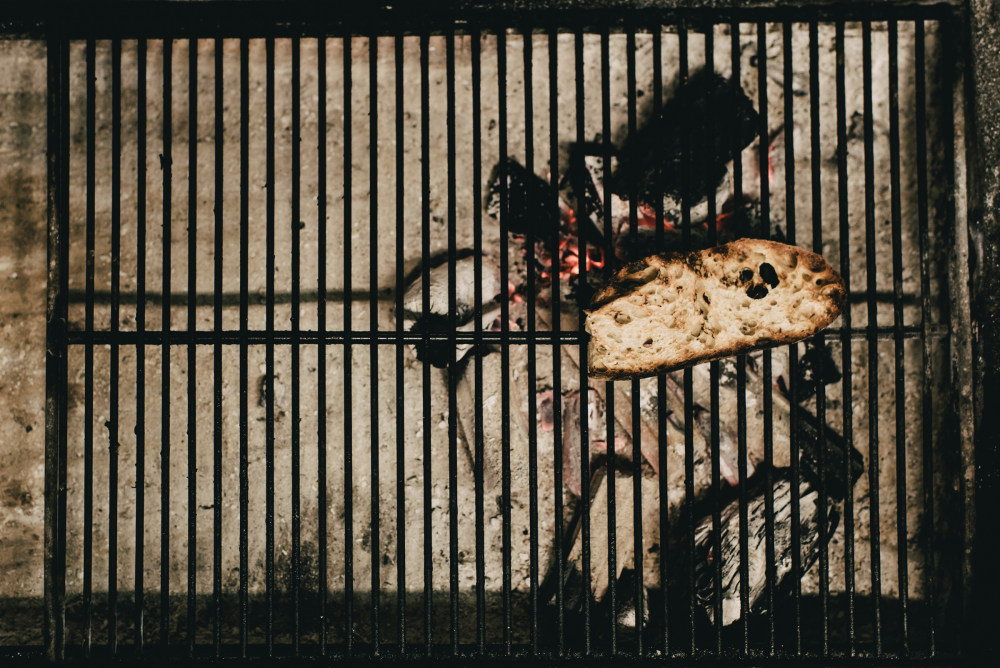
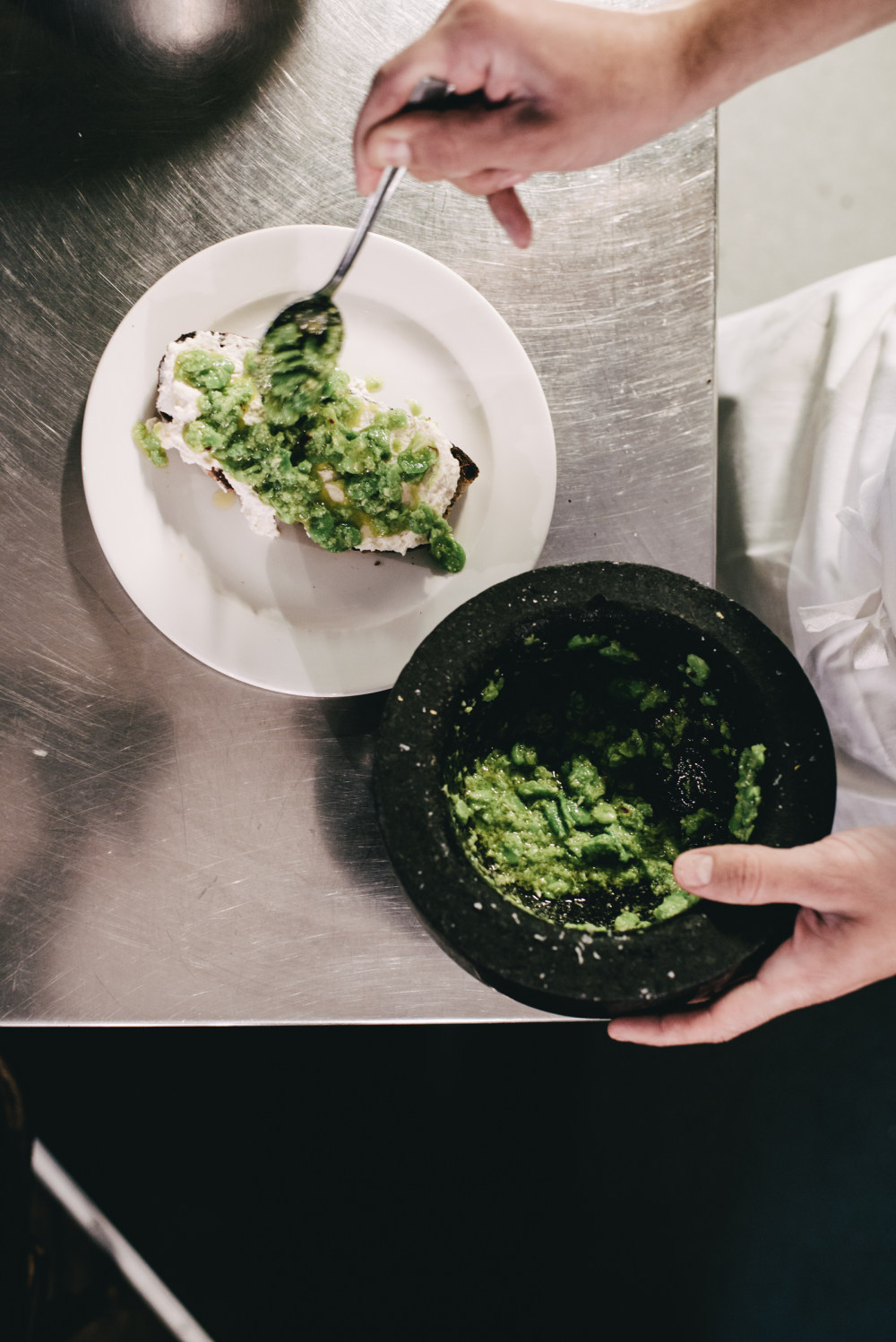
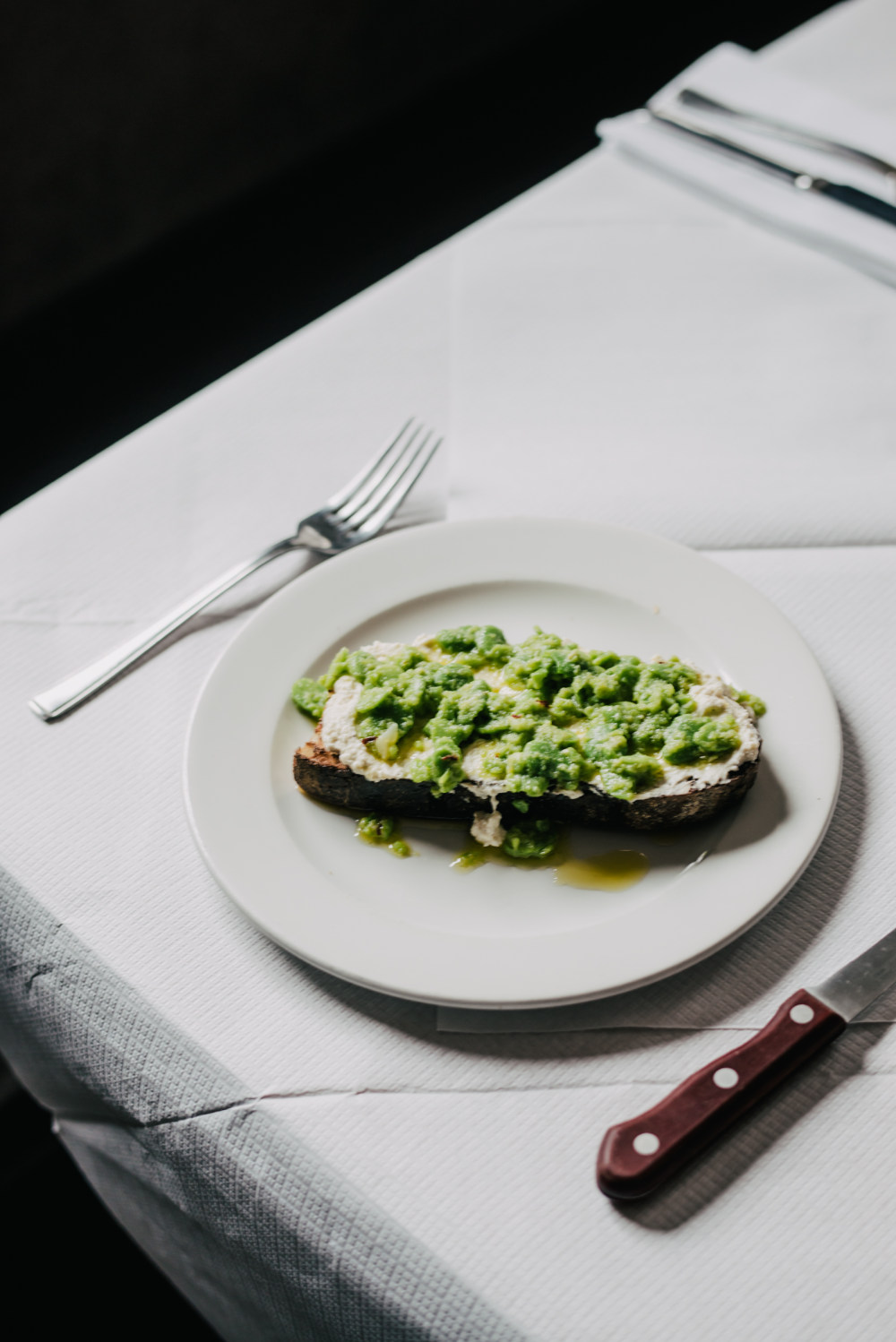

Chef Tim Siadatan and his business partner Jordan Frieda opened their neighbourhood Italian restaurant, Trullo, in Highbury in 2010. Their business and success have grown since then, with a cookbook under their belt and a second venture, Padella, a more casual pasta eatery near Borough market, as famous for its pici cacio e pepe as it is for its queues, opening in 2016. In that time, Trullo has garnered a reputation for good, reliable and uncomplicated Italian cooking, where, after nearly ten years, the only thing that changes is the menu – daily, in fact.
In our series ‘The Modern Menu’ we’re exploring home cooking with some of our culinary luminaries, from chefs to cheesemongers, getting advice, tips and recipes that can be made at home. Here, Tim talks about his early memories of food, what he likes to make at home and shares his recipe for broad bean and ricotta bruschetta.
Tim, what were your formative food experiences?
Tim: “I’m one of six children, and we grew up with our mum as my parents separated. Everything centred around the big dinner table and, because there were so many mouths to feed, we all ate at the same time because it was more efficient than doing it in dribs and drabs.
“It was just good home, mum-style cooking, with classics like spag bol and shepherd’s pie. But I think the main idea I took from it was being all together around the kitchen table – it was so ingrained that that’s how we would eat.
“My dad owned Italian restaurants and pizzerias so when I went to stay with him I would get to see the hustle and bustle of a professional kitchen. It was really exciting for a five-year-old to sit under the pizza station and watch the chefs do their thing. There was something so fun about it, and I think that stuck with me.
“But it was my granny who really showed me what good food was. She was an old-school English woman who always had something bubbling away on the stove, forever baking, pickling or preserving.
“She would make big, epic Sunday lunches that often included offal, game or rabbit – proper cooking. And, because all the vegetables came from her garden, everything tasted amazing.
“The combination of those three influences – home life, being in the restaurant kitchens and the sort of food my granny made – was what I think put me on this path.”
Trullo is obviously an Italian restaurant – where did your affinity with Italian cooking come from?
Tim: “It started when I was a teenager, when my family would go on summer holidays to an Italian villa that was on a farm.
“It wasn’t fancy but the farmer made his own olive oil and we ate the tomatoes he grew at lunchtimes. I remember it was the middle of August, at the height of the tomato season, and I ate one just with olive oil and salt. It was incredible, and afterwards I ate bucket loads.
“That experience began to change the way I looked at food and how incredible produce can, and should, be. I didn’t know that what was going on but, looking back, I can see a seed was planted.
“And then I went to train with Jamie Oliver at Fifteen. He’d just come from working at The River Café so, essentially, we were making the food he’d learnt there, i.e. classic Italian cooking.
“At the same time, he took us on sourcing trips to Italy, where we would go and see the wine and olive oil harvest. It transformed my connection to food and produce, and I think that’s where the real love and appreciation for Italian cooking started.
“I went to work at St. John and Moro after that, but me and Jordan, my business partner, always knew that if we were to open a restaurant it would do Italian food. And, sure enough, that’s what we did in 2010.”
What sort of restaurant did you want to open?
Tim: “Well, we initially had an idea for a pasta restaurant, although it wasn’t called Padella at the time. We entertained the idea for a while but ultimately realised there wasn’t the market for a casual-style restaurant like that back in 2008.
“The other thing we wanted to do was a neighbourhood restaurant. We’d both been trained by amazing chefs in great restaurants, both with philosophies that really resonated with us. We set out to put all those values and teachings into a local restaurant that was a bit more affordable.
“I think we’ve stayed true to that. We don’t put prices up more than we have to because I still want this to be a place a 21-year-old could bring a date and navigate the menu. And, of course, you can go big if you want, but I always write the menu in a way that can cater to everyone.
“A restaurant, in our opinion, is nothing to do with the owners or the chefs, frankly. I dont like those kinds of restaurants where people are made to feel privileged just to be there.
“At the end of the day people have worked hard to earn money and they’ve chosen to come and spend it with us. Our regulars treat this place like their own, and they, rightly, feel proud of it.”
Do you get to cook at home a lot these days?
Tim: “My partner, Daisy, and I now have an 18-month-old daughter, so we don’t go out as much as we used to and get to cook at home more because of it. Because she’s so young, we don’t normally eat together during the week, but we still cook almost every night, and then weekends are about family and friends.
“Daisy is actually a really good cook but she works full time as well, so we keep it straightforward in the week. I do similar things to what we do here and we have pasta at least once or twice a week.
“But we also make completely different stuff too, like curries, Thai, Peruvian, and we love Spanish food too. Daisy is amazing at kind of clean, Californian bowl food – lots of grains but really good!
“We try to have a roast every Sunday, so the kitchen is used a lot. Last Friday night we were out for dinner and had T-bone, Saturday we had people over and I did loads of chicken thighs, roasted on top of potatoes, Turkish peppers and loads of garlic. So yeah, we eat well, but it goes with the territory.”
Tim’s recipe for broad bean and ricotta bruschetta
Italian and Spanish broad beans have just come into season, and English ones will be ready to eat from June. This is a really straightforward recipe, anyone could do it at home.
The nice thing about this is that it could be done for breakfast, which I think works really well, or you could have it for lunch with a bit of salad, and you could even cut it up and have it as a canapé. Get the best ricotta you can get your hands on – ours is from Neal’s Yard.
You could do this with new season peas too, but keep them raw instead of blanching them. You could do it with a cooked pulse: chickpeas, borlotti or canellini beans for sure. Just smash them up and mix them with the same things in. Tomatoes are always good on ricotta too.
Serves 1 – scale up accordingly
100g ricotta
40g finely grated parmesan
500g broad beans in their pods (will yield about 160g)
5 x leaves mint, finely shredded
50 ml olive oil
A pinch of dry chilli
1 teaspoon lemon juice
Salt and pepper
1 slice of wonderful bread
Pod broad beans and blanch in seasoned boiling water for one minute. Strain and cool in ice water.
Coarsely pound the beans in a pestle and mortar.
Add chilli, mint, lemon juice, olive oil and a pinch of salt and pepper.
Season ricotta with parmesan and a pinch of salt and pepper.
Toast bread.
Spread ricotta on the bread, then scatter the broad beans on top – eat!
InterviewsLifestyleThe Modern Menu- 转载自:The Modern House
- 语言:English
- 阅读原文
|

 发表于 2020-8-4 06:21:22
发表于 2020-8-4 06:21:22

























